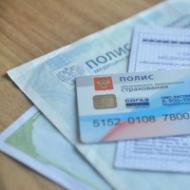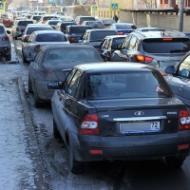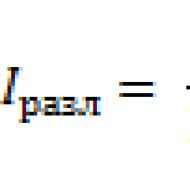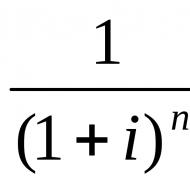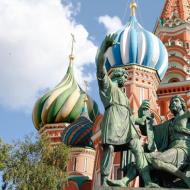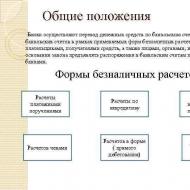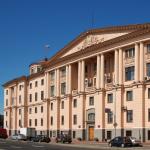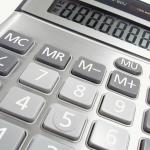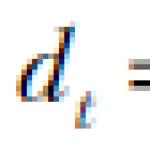
Russian stock exchanges. Exchange. Classification of exchanges. Exchange in Russia Russian Financial Exchange
The Russian stock market received new life back in 1991 after the country transitioned to a market economy. Despite this, until the early 2000s it was in its infancy, and only after the restoration of the national economy did its dynamic development begin.At the end of 2011, MICEX and RTS merged into MICEX-RTS, which subsequently received the new name Moscow Exchange. In 2018, all activities of the Russian Stock Exchange are carried out in Moscow and St. Petersburg. The northern capital accounts for about 10% of the total market volume. 87% is concentrated in Moscow, and the remaining 3% is divided between regional stock market structures located in cities with a population of over a million.
Infrastructure
The stock market infrastructure in the Russian Federation consists of the following elements:- The regulatory body is the Central Bank, which performs supervisory functions. It monitors the actions of all market participants and, if necessary, imposes fines or revokes licenses. In addition, the Central Bank is engaged in registering the results of emissions valuable papers and issues licenses to carry out operations on the Russian stock market.
- Self-regulatory organizations are structures that include professional participants financial markets, assisting the Central Bank in regulating the situation on the stock market. The largest SROs: NLU, NAUFOR, NFA, PARTAD.
- Exchanges are the most important component of the market, which is its core. The purpose of the exchange is to ensure liquidity, stability, determine fair price, taking into account market characteristics. At its core, the exchange serves as a platform for conducting transactions with securities.
- Brokers - legal entities with a broker's license who execute their clients' orders on the stock exchange for a commission.
- Dealers are legal entities that have a dealer license, which gives them the right to carry out transactions with securities at their own expense, thereby making a profit.
- Independent registrars are market participants whose basic task is to maintain a register. In addition, they have the right to provide the necessary information to the owners of assets included in the register.
- Depositories are legal entities that provide storage of securities and record the rights that their new owners receive.
- Clearing organizations are market participants who are responsible for filtering information about completed transactions and transmitting it to settlement centers or depositories.
Functions
Stock market plays a huge role for the national economy. In Russia its main functions are:- Regulation of financial flows. Thanks to this, there is an optimal redistribution of capital to the leading sectors of the country’s economy, which is reinforced maximum profitability invested capital.
- Implementation of the basic principles of democracy, conditioned by the issue and sale of securities on the stock exchange. That is, all key decisions are made by voting by shareholders.
- Creating convenient conditions for the most profitable trading between market participants.
Russian stock exchanges and the principles of their operation are little known to the average Russian, simply due to the fact that for most of the twentieth century their activities were carried out on the territory of modern Russia was prohibited. However, at least minimal knowledge about the mechanism exchange trading as an economic institution and about the main stock exchanges of Russia are necessary - for example, in order to better navigate the news and economic situation in the country. Well, besides, that same average Russian can even try to earn some money with the help of exchanges.
Why are Russian stock exchanges needed?
So, a stock exchange is a non-profit organization whose main purpose is to create conditions for the circulation of securities (stocks, bonds, etc.). There are several main functions that the stock exchange performs in solving this problem:
- organizing the process of selling various securities (allocating space, resolving technical issues, etc.)
- informing everyone interested parties about securities put up for auction;
- ensuring all interested participants have access to the bidding process;
- determination of the market value of all securities offered on the stock exchange;
- guaranteeing the execution of transactions concluded on the exchange floor, arbitration;
- maintaining high level professionalism of all bidders;
- working to create and maintain professional ethical standards.
It should be noted that the above described general principles functioning of stock exchanges - regardless of the countries in which they operate. However, on this moment The Russian stock market operates on the same principles as the world market - therefore, everything said above applies to Russia in full.
Russian stock exchanges today
At the moment, the Russian stock market is still in the process of development and formation. Still large stock exchanges In 2014, Russia shows fairly stable performance, and working on them is no more difficult than on the world’s leading exchanges.
Experts count 11 stock exchanges in Russia, but only the 5 largest of them deserve real attention. These are the Moscow Interbank Currency Exchange (MICEX), the Russian Trading System (RTS), the St. Petersburg Stock Exchange, the St. Petersburg Currency Exchange (SPVB) and the Siberian Interbank Currency Exchange (SICE).
However, it should be noted that some alternative sources they call the figure 10, not 11 exchanges, and the list of the main ones includes: the Moscow Interbank Currency Exchange, the Ural Regional Currency Exchange (MICEX-Ural), the St. Petersburg Exchange and the St. Petersburg Currency Exchange (SPVB).
Characteristics of the 5 largest stock exchanges in Russia (2014-2015)
The Moscow Interbank Currency Exchange (MICEX) is one of the largest exchanges not only in Russia, but also in Europe. Occupies the main share in stock trading Russian Federation. More than 700 Russian issuers and about 600 brokers representing the interests of 650 thousand private investors are participating in the trading. Total capitalization is about $300 billion.
The Russian Trading System (RTS) is currently the main derivatives exchange in Russia. It is divided into sections, in each of which certain types of securities are traded.
The St. Petersburg Stock Exchange trades primarily in shares of OAO Gazprom and bonds of St. Petersburg.
The St. Petersburg Currency Exchange (SPVB) deals with sub-federal bonds of St. Petersburg and certain liquid shares of some large Russian companies.
The Siberian Interbank Currency Exchange (SICEX) operates on the stock, foreign exchange, commodity and even derivatives markets.
Russian Stock Exchange online
All of the above information is undoubtedly very interesting and even entertaining for those who have never been interested in the stock market before. However, it quite naturally raises the question - can anyone participate in trading on the stock exchange?
Yes and no. According to the rules of operation of any exchange, only brokers, dealers and managers can take part in trading. Russian stock exchanges are no exception. The admission procedure is determined by the rules established by each exchange individually. All other people, if they want to buy several securities on the stock exchange and, for example, sell them after some time at a higher price, must turn to the same brokers for help. Of course, you will have to pay for the services.
Some of these intermediaries operate via the Internet, giving everyone the opportunity to trade on Russian stock exchanges online, which is not only very convenient, but also contains a fair amount of excitement.
Moscow Exchange includes the following trading platforms:
-Stock market
- trading of stocks and bonds is carried out.
-Derivatives market- are traded financial instruments, such as futures and options on stocks, indices, currency pairs.
-Currency market– transactions are carried out with foreign currency pairs dollar/ruble, euro/dollar, euro/ruble, Chinese yuan/ruble, as well as Belarusian ruble, Ukrainian hryvnia and Kazakh tenge. On the basis of the trading platform of the foreign exchange market, trading in gold and silver is also carried out.
-Money market- repo transactions are concluded with government securities and money market instruments.
Russian stock market:

Story
Stock market revived in Russia after economic liberalization in 1991. History of the stock market Russian Empire until 1917 it was not directly related to the history of the modern Russian securities market. In the conditions of the command-distribution economy of the USSR, the movement of financial flows was determined by the decisions of the party and financial and economic bodies, therefore the conditions for the revival of the stock market, which existed before the 1917 revolution, remained unfavorable until the early 1990s. In place of the official stock market, there was only the so-called “black market”. The securities market (RSM) in Russia began to revive in the first half of 1991 after Resolution of the Council of Ministers of the RSFSR No. 601 of December 25, 1990 was adopted “On approval of the Regulations on joint stock companies Oh". However, for a long time, the low level of financial and economic knowledge of the country’s population as a whole did not allow the market to develop. The situation was also complicated by privatization fraud in 1993-1994. The dynamic development of the legitimate stock market began only after the resumption of growth Russian economy since the early 2000s.
- December 25, 1990 - adoption of Resolution of the Council of Ministers of the RSFSR No. 601 of December 25, 1990 “On approval of the Regulations on joint stock companies.”
- February 1992 - the first Antares stock store was opened in Moscow.
- March 1992 - the emergence of the Moscow Interbank Currency Exchange (MICEX), the founders of which were Central bank Russian Federation, the Moscow government, ARB and also a number of private banks. In the same year, the MICEX won the tender for the right to create a full-fledged exchange infrastructure for government securities and began preparations for trading in government securities. short-term liabilities(GKO).
- March 1993 - creation of the Federal Commission for Securities and Stock Exchanges under the President of the Russian Federation.
- in the summer of 1995, electronic trading began on the classic stock market, called the “Russian trading system"(RTS).
- 1996-1997 - the beginning of trading in non-government securities on the Moscow exchanges. The Federal Commission for the Securities Market (FCSM) began to license the organization of trading in securities. Regional currency and stock exchanges (Samara, Rostov-on-Don, St. Petersburg, Nizhny Novgorod, Ekaterinburg). As of December 1997, 50 types of shares of 33 corporate issuers and 100 bonds of 40 constituent entities of the Russian Federation were traded on the MICEX.
- August 1998 - financial and banking crisis. After August 17, the average daily market turnover fell several times.
- 1999 - the stock market began to grow actively again, and the corporate bond market also developed rapidly. Russian shares in 1999 were the fastest growing in the world. One of the reasons for success was the introduction of securities listings by exchanges, which meant the presence of certain guarantees of the quality of financial instruments.
- 2000 - the beginning of placements on the MICEX of bonds of a number of large Russian banks and financial companies(Vneshtorgbank, Guta Bank, Credit Swiss First Boston Capital, etc.). MICEX has introduced Internet trading.
- 2001 - the ability to enter into and execute repo transactions with corporate securities.
- 2002 - the beginning of trading on bonds of external bond loans of the Russian Federation (Eurobonds).
- 2004 - the total turnover of transactions on the MICEX stock section reached $142 billion. An institute of exchange specialists was created, designed to develop liquidity for “second-tier” shares.
- 2006 - the total trading volume on the stock market amounted to more than $500 billion.
- 2007 - the total trading volume on the stock market amounted to more than $1.1 trillion.
- 2008 - the total trading volume on all markets of the MICEX group amounted to $5.8 trillion.
Russian stock market (Moscow Exchange):

On the stock market (securities market), which is part of financial market, transactions are carried out mainly with securities such as shares and bonds (equity and debt securities). These operations are carried out Moscow Exchange(moex.com) and the National Settlement Depository (nsd.ru), and they are responsible to market participants for uninterrupted trading in securities, settlement of transactions and storage of securities.
Sector “Main market” (stock market) The Moscow Exchange includes two large markets, which can be conditionally divided by technology and types of instruments admitted to trading:
- Market of shares and shares. The market conducts trading in Russian and foreign shares, depositary receipts, investment units of mutual funds, ISU, ETF. The main trading mode is “T+2 Depth of Market” (T+ main trading mode). Trading is carried out using technology with a central counterparty, partial collateral and deferred execution. Payments and delivery are carried out on the second day from the moment the transaction is concluded (settlement cycle - T+2).
Bond market. The market conducts trading in OFZs, regional and municipal bonds, Russian corporate (including exchange-traded) bonds denominated in rubles and foreign currencies, corporate Eurobonds and sovereign Eurobonds of the Russian Federation.
OFZ trading is carried out using technology with a central counterparty, partial collateral and deferred execution. The main trading mode for OFZs is “Dom T+1” (Main trading mode T+). Payments and delivery are carried out the next day from the moment the transaction is concluded (settlement cycle - T+1).
The main trading mode for bonds denominated in US dollars is “T+2 Depth of Market” (T+ main trading mode). Payments and delivery are carried out on the second day from the moment the transaction is concluded (settlement cycle - T+2).
The main trading mode for regional and municipal bonds, Russian corporate bonds, Eurobonds of the Ministry of Finance, Eurobonds denominated in non-US dollars is “T0 Depth” (Main Trading Mode). Trades are held with full (100%) advance security. Settlements in the Main Trading Mode (“T0 order book”) are carried out on the day the transaction is concluded (T+0 settlement cycle).
Stock market:

Stock are divided into ordinary and privileged.
Ordinary shares give the right to vote on general meeting shareholders. Owners of ordinary shares participate in the distribution of company profits only after replenishing reserves and paying dividends on preferred shares. Therefore, the payment of dividends on ordinary shares is not guaranteed, since it depends on the results of production activities and the amount of profit received. Upon liquidation ordinary share gives the shareholder the right to part of the property of the liquidated company after settlements with creditors and owners preferred shares.
Preference shares give their owners the right to priority receipt of dividends on fixed rate regardless of the amount of profit received by the joint stock company for reporting period. Owners of preferred shares also have a preemptive right to receive a share of the property of the liquidated joint-stock company. At the same time, owners of preferred shares are, as a rule, limited in their participation in the management of the joint-stock company.
Par value of the share determined by dividing the sum authorized capital joint stock company by the number of shares issued. Shares are paid at par value upon establishment of the company. The nominal value of a share is the basis for determining the issue and market value(i.e. its price on the stock exchange and on the over-the-counter market), as well as the calculation of dividends. Market price depends on the relationship between supply and demand, which, in turn, is determined by the amount of dividends received on the stock, stock market conditions, the influence of advertising and many other factors.
Each of them is characterized by a certain set of properties:
- Liquidity
- Spread
- Volatility
- Average trading volume
Liquidity is the ability of a stock to be converted into cash without losing its market value. This is very important indicator, because it is he who determines how quickly an investor can buy or sell securities at the current market price. The liquidity of a share depends on two main parameters: The number of shares in circulation. The more there are, the higher the liquidity. Investment attractiveness valuable papers. There must be a sufficient number of investors in the market willing to both buy and sell shares. Otherwise, even if there are a large number of securities in circulation, transactions with them will not be concluded.
Spread is the difference between the purchase and sale prices at the same point in time. This indicator is inextricably linked with liquidity. The more liquid the security, the narrower the spread. This metric is especially important if you are buying a stock with the expectation of making a quick profit. For example, you buy shares of a certain company for 50 rubles. If the spread is narrow, then immediately after buying you can sell them, say, for 50.50 rubles. and you will lose practically nothing. If the spread is wide, then the sale price at this moment can be 55 rubles. In order to simply return your investment, you will have to wait until the price increases by 5 rubles.
Volatility is the degree of volatility of the stock price over a certain period of time. For example, if during the day the price fluctuates within 2% (minimum - 100 rubles, maximum - 102 rubles), we are talking about low volatility. If the range is from 100 rub. up to 120 rubles, that is, 20%, this indicates high volatility. Volatility as a characteristic of stock trading, on the one hand, affects the potential profitability of your investments. The wider the range of price changes, the more you can earn under favorable circumstances. On the other hand, the same indicator determines the level of investment risk. After all, if you bought shares, and their value began to decline, with high volatility you will lose much more at the same time than with low volatility.
Trading volume is the number and value of shares bought and sold over a certain period of time. This indicator is closely related to liquidity, but is not its analogue. Even for liquid stocks, there are periods when their trading volumes are characterized by extremely low volumes.

Types of shares:
- Blue chips
- 2nd tier shares
- 3rd tier shares
Blue chips
Blue chips are stocks with a high degree of liquidity. They can be quickly sold without incurring any losses.
As a rule, issuers blue chips" - This large companies with large capitalization. Such companies, and most of them are huge enterprises, prepare reports in accordance with international standards, as a result of which they are completely “transparent” for the investor.
To the blue chip index includes shares
| 1 | GAZP | GAZPROM SHARES |
| 2 | SBER | SHARES OF SBERBANK |
| 3 | LKOH | LUKOIL SHARES |
| 4 | MGNT | SHARES MAGNIT |
| 5 | NVTK | NOVATEK SHARES |
| 6 | GMKN | SHARES NORILSK NICKEL |
| 7 | VTBR | VTB SHARES |
| 8 | ROSN | ROSNEFT SHARES |
| 9 | SNGS | SHARES OF SURGUTNEFTEGAZ |
| 10 | TRNFP | TRANSNEFT SHARES |
| 11 | SNGSP | SHARES OF SURGUTNEFTEGAZ PRIVATE. |
| 12 | TATN | TATNEFT SHARES |
| 13 | MTSS | PROMOTIONS MOBILE TELESYSTEMS (MTS) |
| 14 | CHMF | SEVERSTAL SHARES |
| 15 | ALRS | ALROSA SHARES |
| 16 | URKA | SHARES OF URALKALI |
2nd echelon
Illiquid shares are second-tier shares, high-risk instruments with a wide range of returns and losses. The profitability of investing in such assets can exceed thousands of percent - but, as a rule, such a phenomenon is very rare, and, for the most part, the risk and income on these securities balance each other.
3rd echelon
For such securities, it is quite normal for a situation when not a single transaction is concluded on shares for several trading sessions in a row. The number of people willing to sell or buy them is so small that the trading spread can reach 5-7%. The volatility of third-tier stocks often reaches extreme levels. Prices may change by 15-20% within one trading session. All this makes trading such securities similar to playing roulette. Therefore, you need to be extremely careful when purchasing them.
Bond market:

Another type of equity securities is bonds. Main types of bonds (by type of issuer): corporate bonds (including exchange-traded bonds), government bonds (bonds federal loan) and regional (bonds of constituent entities of the Russian Federation, municipal bonds) securities. The bond has a circulation period, at the end of which its owner has the right to receive from the issuer face value bonds and all income from the bond provided for in the prospectus. Corporate bonds undergo the procedure state registration in the Bank of Russia, state and regional bonds - in the Ministry of Finance of Russia, exchange-traded bonds - on the Moscow Exchange.
Professional securities market participants:

Federal Law No. 39-FZ of April 22, 1996 “On the Securities Market” defines intermediary activities in the securities market, which are carried out by brokers, dealers and trustees (professional participants). Broker makes transactions on the securities market on behalf of the client: on behalf and at the expense of the client or on its own behalf and at the expense of the client. Dealer enters into transactions with securities on its own behalf and for mine check. Trustee manager highlights personal broker to manage client securities.
On the stock exchange, all transactions for the purchase and sale of securities are carried out only by brokers. Any citizen of Russia has the right to enter into an agreement with a broker, open a brokerage account with him and invest in securities, giving instructions to the broker and paying for his services through a commission. It is important to know that the broker only executes the client’s instructions, without answering for the success of client operations. The trustee, on the other hand, answers to the client for effective management and execution of transactions aimed at increasing the value of assets transferred to him in trust management.
Accounting of rights and storage of securities is carried out by special organizations - depositories. The register (list) of shareholders of joint stock companies is maintained registrars– organizations that have the right to engage only in this activity and have a special license from the Bank of Russia.
Collective investments:

There is a fairly reliable form of capital management in the stock market - collective investment. Currently the industry collective investment in Russia allows you to invest in stocks, bonds, real estate, art, etc.
If a potential investor does not have the knowledge in the field of investing in securities, the time to manage a portfolio of securities, or the funds necessary for individual service by a trustee, he can contact mutual investment fund(PIF). The investment scheme in this case consists of the investor purchasing a certain number of shares investment fund which is under control management company . Its activities are licensed and controlled by the Bank of Russia and are set out in a special document open to all potential investors - the Mutual Fund Rules.
The existing line of funds can satisfy the needs of both a very cautious, conservative investor and an investor willing to take on increased risks.
The Russian stock market is quite young, but very promising. Growth is observed in various sectors of the economy. At the same time, the financial literacy of citizens is increasing, and many private investors are appearing who are ready to invest money in the development of the domestic market. Enterprises are actively using this trend by offering profitable tools.
Russian stock market: trends
Many foreign investors have long understood that when buying shares or Russian enterprises You can not only accumulate funds, but also increase your capital.
At the same time, in Russia there is an incorrect attitude towards exchange transactions. Citizens do not fully understand the investment system, considering it accessible only to wealthy investors, without considering such activities as permanent income. However, the situation is gradually improving.
What features characterize the Russian stock market in 2017? Experts note an increase in interest in trading. Active trading platforms, the emergence of new brokers, interest in attracting investments and affordable investment amounts contribute to the fact that ordinary people start investing available funds.
Shares of leading companies are traded daily on the Russian stock market. However, the risk of investing in the Russian economy worries many. Investors actively analyze negative events and facts affecting assets. This leads to an increase in investments in reliable companies, but to low level demand in other industries.
The good news is that investments in the Russian stock market are acquiring the characteristics of long term investment.
The largest players in the stock markets
Below is an analysis of the decline and growth of shares of the largest domestic organizations as of November 24, 2017:
The best brokers on the market
Experts constantly compile ratings best companies– intermediaries. Among them, a special place is occupied by brokers who have been working for more than 20 years. Such companies have own bases clients, separate offices (including abroad), various awards that increase status. Best brokers The Russian stock market often has several tariff options at its disposal. Every company strives to create courses for beginners.
BCS – BrokerCreditService was created in 1994. In terms of reliability, the company has also been assigned the AAA level. Timely direction in favor of online trading allowed the broker to take a leading position in the market. BCS has fairly high tariffs.
ITinvest was created in 2000. The company is distinguished by its use modern technologies in classical trading. The broker provides two types of terminals – SmartX and SmartTrade. A system of preferential commission fees is provided for active clients.
The period of the late 1980s - early 1990s brought with it the revival of stock exchanges in Russia after almost sixty years of their absence in economic structure THE USSR. This time in the country was marked by a radical restructuring of the established economic system. The main task was the liberalization of the economy, in particular trade and prices, against the background of the deconstruction of the planning and distribution management system. As a result, already at the end of the 80s, commodity exchanges began to form again. In addition, there were plans to establish a redistribution mechanism financial resources in favor of efficient organizations, and some companies even began to issue shares, but this idea practically did not take root at that time.
Since exchanges are an important element market economy, they began to form immediately with the beginning of Russia’s transition to this economic model. They began to form everywhere and conduct trades on a variety of different goods (from food and wood to cars and computers). Most of them did not yet have a classic exchange structure at that time and were more like fairs.
The first and largest commodity exchanges of that time were the Russian Commodity and Raw Materials Exchange (RTSB) and the Moscow Commodity Exchange (MTB). And almost immediately after commodity transactions, forward transactions began to be carried out - for example, the first term transactions were carried out on MTB with grain and cotton. At the same time, the Moscow Chamber of Commerce and Industry (MCCI) began trading in US dollar futures. Gradually, trading in financial assets begins to develop and become organized.
In 1990-1991, it was formed currency market with its Currency Exchange of the State Bank of the USSR (later Currency exchange Bank of Russia), the domestic stock market is beginning to take its first steps. This process was caused by the fact that with the transition of the Russian economy to a market economy, there was a need to issue government securities, which, in turn, play an important role in financing the state budget and regulation economic activity. With the beginning of the privatization process, stock exchanges were formed, for example, the Moscow International Stock Exchange (MISE), the Moscow Central Stock Exchange (MCSE), and the Russian International Currency and Stock Exchange (RMICE). At the same time, many commodity exchanges are also starting to trade securities.
Creation of a universal MICEX exchange
In 1992, the Bank of Russia began work on a project for issuing government short-term securities. In this regard, he needed an “assistant”, and among several exchanges, including MICEX, MCSE, RMVSE, the Moscow Interbank Currency Exchange (MICEX), which was the center of interbank foreign currency trading, was selected for this role. Thus began work on the creation of government securities and secondary trading mechanisms, and on May 18, 1993, the official opening of the market took place. The MICEX, in turn, began work on creating an electronic trading and depository system. She organized a unified electronic financial market “ETHIR” for interregional trading. Thus, in 1994, a new technical complex was formed, allowing the still young exchange platform to develop and ensure the circulation of securities throughout Russia.
Later, in 1997, trading in corporate securities was launched on the MICEX - first in shares of three issuers: Mosenergo OJSC, Rostelecom OJSC and Norilsk Nickel OJSC. Over time, shares of an increasing number of Russian companies began to be traded on the stock exchange.
And from September 22, 1997, the MICEX began to calculate its own stock index. It took it less than five years to become a sustainable trading platform for various securities issuers and earn the title of one of the leading Russian currency and stock exchanges. In addition, the MICEX became the first exchange in Russia on which corporate bonds of leading Russian companies, such as Gazprom, Lukoil and others, are traded.
Creation of the RTS stock exchange
In 1995, professional participants in the financial market united to create a single over-the-counter trading platform and regulate the circulation of securities - this is how the “Non-Profit Partnership for Financial Market Development (NP RTS)” was born, and the Classic RTS Share Market was created. Its participants entered into transactions, independently choosing the currency and settlement time, and organized trading on the widest possible range of securities. The Russian Trading System (RTS) has become a recognized platform for making transactions in shares, and since 1995 it has already begun to calculate its own stock index. And in 2000, RTS received a stock exchange license, after which in 2001 it created the RTS Board system for quoting those securities that were not admitted to trading on the RTS exchange itself.
A little later, two leading exchanges of the Russian financial market merged to create a common trading platform, which made it possible to simplify interaction between market participants and concentrate on introducing modern technologies into its mechanisms.
Development of stock exchanges in Russia at the present stage
Today in Russia there are more than ten stock exchanges, but a significant trading volume, nevertheless, falls on the main exchanges, including PJSC Moscow Exchange, PJSC St. Petersburg Exchange, Currency Exchange in St. Petersburg and others.
Moscow Exchange (MICEX-RTS) was formed in 2011 as a result of the merger of two trading platforms, MICEX and RTS, competing at that time.
It is among the top 20 largest stock exchanges in the world in terms of trading volume and capitalization and provides a wide range of products, including markets for stocks, bonds, derivatives, absolutely all instruments of the foreign exchange, money, and commodity markets.
The combined MICEX-RTS platform serves 6 markets:
- Stock (trading shares, shares and depositary receipts);
- Futures (futures and options, futures contracts for stock
indices and interest rates);
- Foreign exchange (transactions with foreign currency);
- Cash (designed for repo transactions);
- Commodity (gold, silver, grain);
- Over-the-counter (securities not traded on the exchange market and other financial instruments).
The total trading volume of the exchange on all markets amounted to 850.4 trillion rubles at the end of 2016.
St. Petersburg Stock Exchange organizes trading in securities, including foreign securities, futures and options. The St. Petersburg derivatives market boasts a stable structure, since it has become the only derivatives platform on which, even during financial crisis In 1998, all obligations under forward transactions were fulfilled.
In 2014, the exchange launched trading in foreign securities - St. Petersburg gained access to the American stock market. Transactions are settled in US dollars, and assets are stored in a Russian depository and can be transferred to any depository in the world.
Today, the most liquid American shares included in the S&P 500 index are traded on the St. Petersburg Exchange. The possibility of trading such securities within Russian legislation implemented for the first time. The exchange offers a highly liquid market and a variety of trading strategies.
St. Petersburg Currency Exchange mainly deals with trading in foreign currencies (US dollar and euro), conducts auctions and secondary trading in bonds of constituent entities of the Russian Federation.
Thus, the Russian stock market is quite young. But currently it is growing and actively developing, as a result of which it can boast of some advantages in comparison with the American one:
- lower commission costs;
- government support for investors;
- easier start for trading;
- no language barrier.
Modern Russian stock exchanges set themselves the tasks of efficient circulation of domestic and foreign securities, development of the financial market as a whole, improvement of exchange technologies, attracting an increasing number of investors and resources, as well as improving the investment climate in the country and financial literacy citizens.
You can read about the USSR stock market in this material.
Elizaveta Shatirishvili


